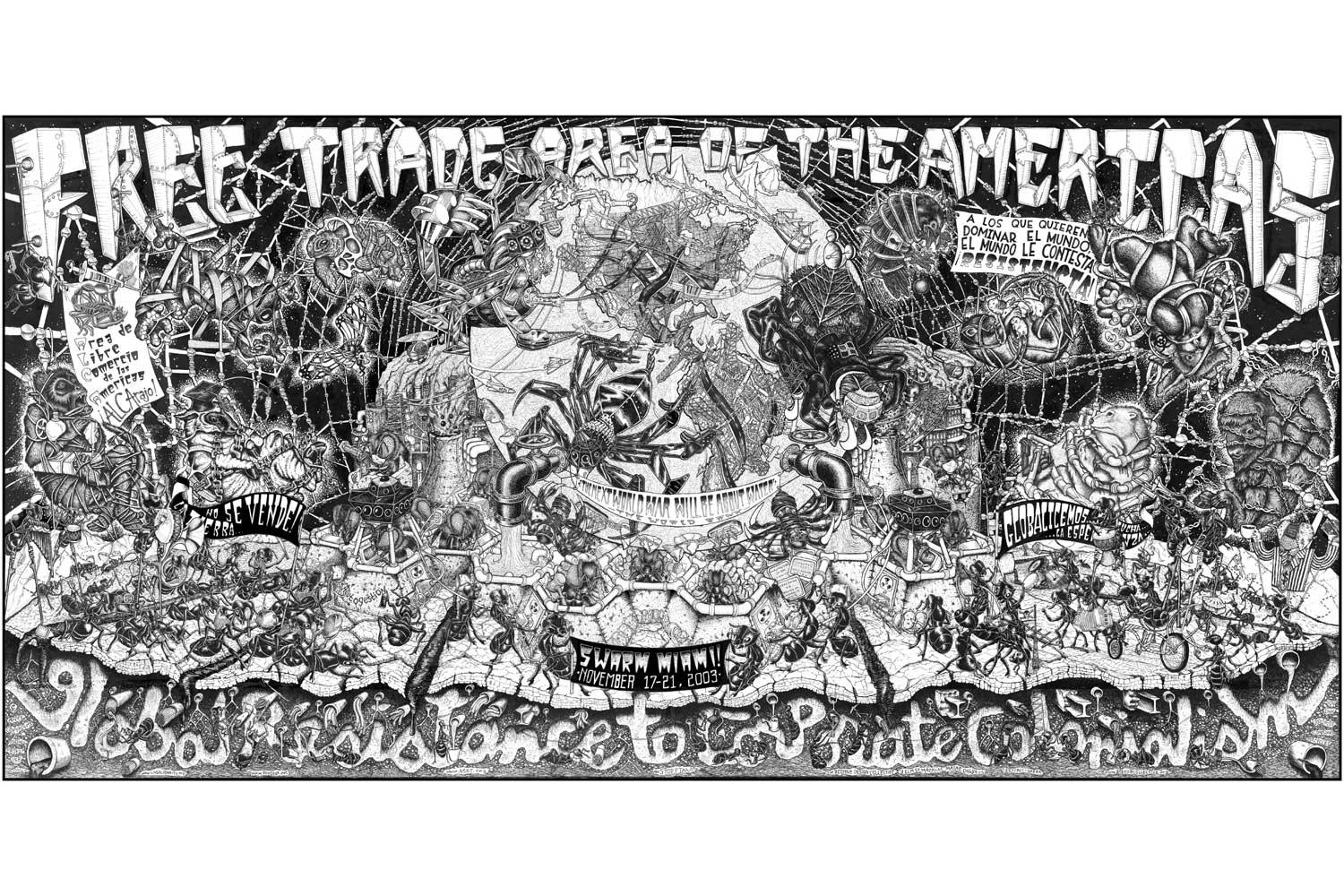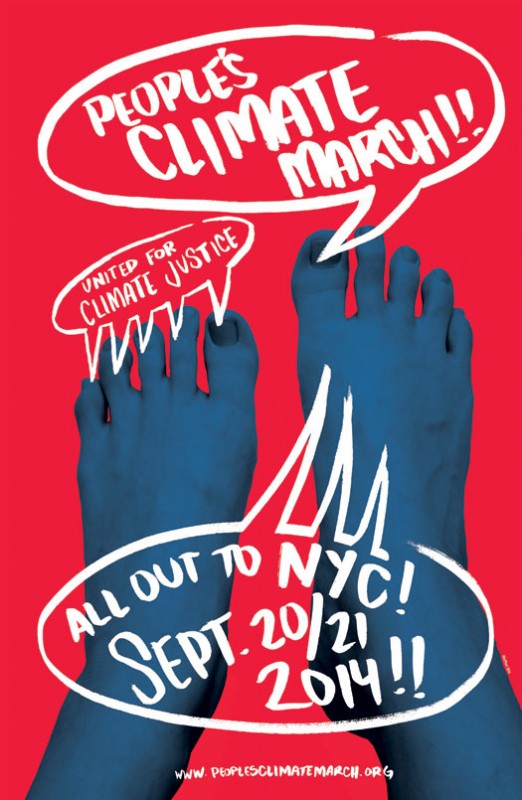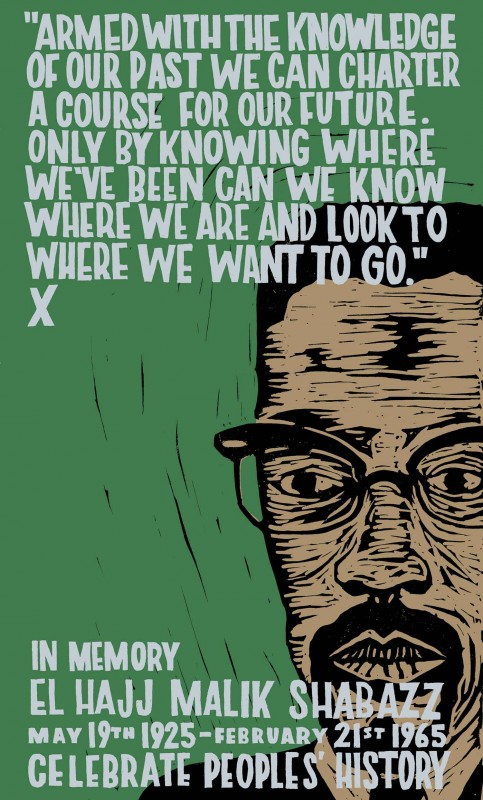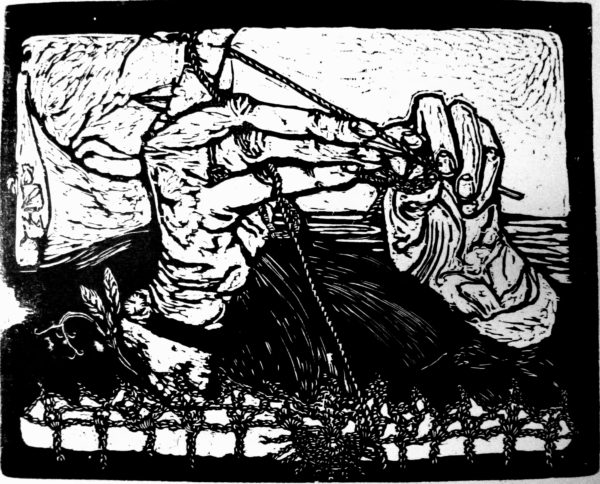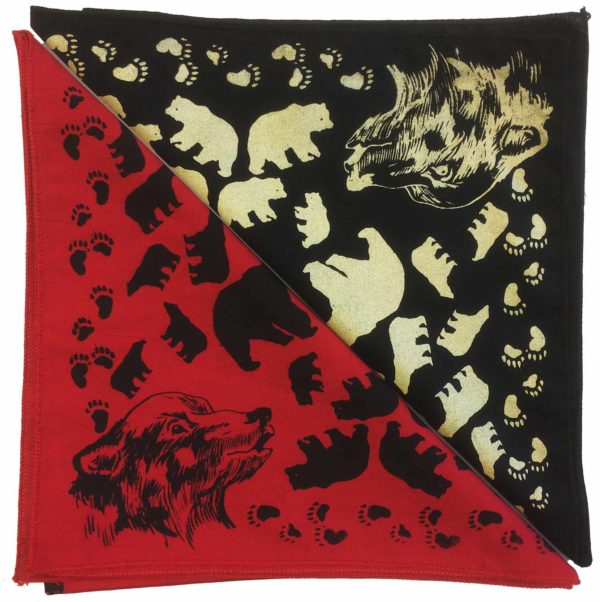The FTAA poster was the Beehive’s first large scale narrative graphics campaign, and became the first in a trilogy of graphics about globalization in the Americas. We made this graphic in the lead up to the mass demonstrations against the negotiations of the Free Trade Area of the Americas (FTAA) that happened in Quebec City in 2001. We reprinted the poster to take to Miami for the next round of talks at the end of 2003. The FTAA finally reached an impasse and stalled out after the last attempt at negotiations that took place in Mar del Plata, Argentina in 2005, also amidst large protests.
The heavily contested, and now collapsed, Free Trade Area of the Americas was a proposed international trade agreement that aimed to eliminate the remaining “barriers” to the free flow of money, goods, and services across borders in the entire Western Hemisphere, excluding Cuba, in an attempt to create ONE huge, integrated web of “open markets.” It was first introduced at the 1994 Summit of the Americas, soon after the signing of the North American Free Trade Agreement (NAFTA), and then negotiated in private for a decade.
This graphic representation of the FTAA illustrates the consequences of this plan, and exposes its threat to the well-being of all forms of life throughout the Americas. In our most recent reprint of the poster, we changed the banner at the bottom to read “la lucha sigue contra todos los TLCs / the fight continues against all free trade agreements.” Since the collapse of the FTAA negotiations, the US has continued to push forward bilateral trade agreements (which means between the US and one other country, like Colombia, Panama, and Korea) and regional trade agreements (like in Central America).
Most recently, a new, sweeping free trade agreement called the Trans-Pacific Partnership (TPP) is in the works, that would include at least 12 countries, including the US and Asian and Latin American countries. Like the FTAA, the TPP is being negotiated in private and the US is pushing for fast-track approval of the plan.

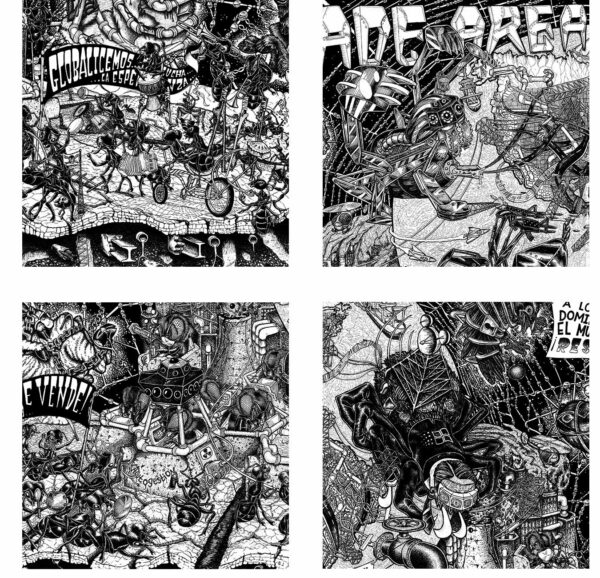
HOW TO USE THIS POSTER
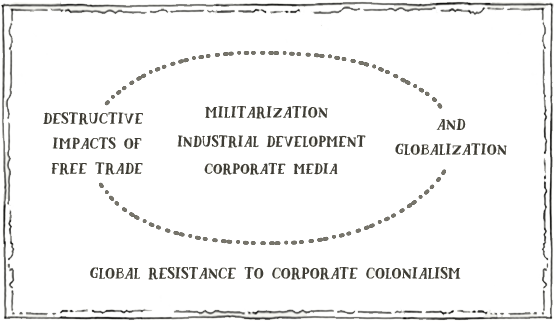
We start in the middle of the poster, where three spiders of militarization, industrial development, and corporate media have taken control of the web of life. From there, the story spirals out into the threads of the web, where many different animals are trapped and tangled up, symbolizing the wide ranging destructive impacts of free trade and globalization. Across the bottom, ants representing peoples’ movements have dug out tunnels underground that spell out “global resistance to corporate colonialism.”
This poster can be used as an introduction to the many different issues that come up in discussions about free trade, and to talk about how social, political, economic, and environmental issues are all connected and impact each other. By literally putting everything on the same page, we strive to break down the mindset that these are “single issues.” This graphic is also a celebration of global resistance to the neoliberal model of development behind free trade agreements, and can be used to spark storytelling and sharing of strategies and tactics.
This large-scale poster comes with an informational booklet to further educate about the content of the poster. It’s art that is also a teaching tool to break down complex political-social issues through complex graphics.
